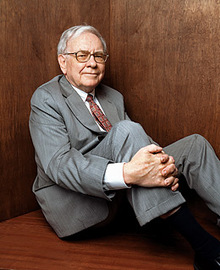
All the advances of the Internet in the last quarter century stem from clouds. AI is impossible without clouds. So is Google.
Clouds are funded through cash flow. By the turn of this century, Google knew it needed vast computing capacity to run its business. To maintain profitability, on services entirely funded by advertising, they needed to do this cheaply. Virtualization, parallel processing, open source, and cheap X86 chips were the answer. It was funded by cash flow from advertising.
Amazon copied this idea to run its online store. Facebook copied it to run its social network services. Microsoft copied it to run its software business, and Apple to run its services business.
We talk about the technological roots of the cloud constantly, especially as it’s changing with expensive Nvidia chips. We don’t talk enough about the financial roots, cash flow.
There are two groups who hate this model.
Regulators vs. Cloud

The alternative model is to build with debt. AT&T and IBM were built with debt. Their “capital budgets” were funded like your house. That is partly with cash, partly with loans, and if the debt service couldn’t justify the expense, it wouldn’t be made. This is why both these companies missed the cloud. Debt can’t justify the expense or, if it can, it’s slow going.
There are clouds built in this way. The service centers of companies like Equinix and Digital Realty, called “data center REITs,” are built with debt. Half of Equinix’ assets are currently encumbered by debt. The REITs are, by definition, required to hand out most of their earnings to shareholders. Over the last five years, Equinix’ quarterly dividend has risen from $2.46 per share to $4.26. A dividend investor would say they’re getting a 3.4% yield on the current dividend if they’ve held on for five years. Plus, capital gains averaging 10% per year.
I’d rather own Amazon.
Regulators might consider Equinix’ return fair, or they might try to restrict its profits, as they did for generations with AT&T. But then you don’t get the cloud. Debt also won’t get you Amazon’s CapEx budget, $58.4 billion this year, more than double AT&T’s. Overall, capital spending on cloud data centers this year will top $300 billion. That’s the power of cash flow.
Value Investors vs. Cloud

Amazon makes a point of putting its cash flow statement first when it reports earnings. For all of 2023, it had just $19.6 billion of this free cash flow.
Yet Amazon is worth almost four times more than Walmart. Why is that?
The answer lies in its operating cash flow, the money coming in less the cost of running the business. Last year this was $85 billion. If you divide Amazon’s market cap, $1.9 trillion, by the operating cash flow, you’re paying 22 times operating cash flow to own Amazon. But a value investor looks only at free cash flow. He’s going to have to pay nearly 100 times free cash flow to own Amazon and says pass.
Value investors missed an entire decade of gains by valuing free cash flow over operating cash flow. They’re still telling clients to do this. They keep insisting things will revert to the mean.
Everything in the tech economy is riding on infrastructure built by the Cloud Czars, with operating cash flow.
Back in the 20th century they said cash is king. In the 21st century cash flow is king.










